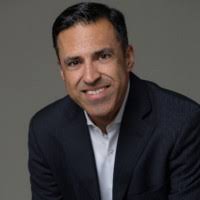Valhalla Telemedicine Firm Looks to Improve Doctor-Patient Dynamic

More than a decade ago, Dr. Samant Virk noticed that advances in technology were helping him and countless others with mundane tasks such as banking or shopping.
But when Virk, a practicing neurologist, would go to work, the tools that were helping millions of people like himself with routine matters in their personal lives were nowhere to be found to assist him, his patients or his colleagues. Most of Virk’s time was spent filling out forms, dealing with insurance companies and playing phone tag instead of helping patients.
Virk has sought to change that. A few years ago, he established MediSprout, a service he developed using a videoconferencing system called V2MD to conduct consultations and follow-up visits with patients rather than having them go through the trouble of the office visit. Instead of the time-consuming process of traveling, sitting in the waiting room or having the visit last longer than needed, the video connections could be as quick as five or 10 minutes long.
Doctors can also more quickly and easily answer a few questions patients may have rather than run the high risk of missing their calls and having trouble connecting when returning their message.
“I can eliminate these simple visits that they’re coming into my office for and wasting their day, and I’m taking up extra time out of my practice, and addressing them much more efficiently in follow-up care,” Virk said.
For the patient to connect with MediSprout’s service almost any type of computer or mobile device will work. The company, which has its office at New York Medical College in Valhalla, now works with doctors from about 25 medical practices around the United States. Patients can sign up on the website, www.medisprout.com, and are charged $4 per videoconference.
Of course, someone’s doctor also needs to be registered for the service in order for the patient to use it. Physicians and their medical groups can sign up on the website as well. The service is free for doctors.
Virk said he believed most office visits can be eliminated, although the videoconferencing is more likely to help doctors who are specialists. There still needs to be office visits for initial examinations, or in the case of primary care doctors, for annual physicals.
However, if doctors are aware of their patients’ stories and situation, the tasks of monitoring and answering questions can be done remotely.
“Our goal is to create a world where most of the visits that a doctor can perform can be virtual,” Virk said. “It’s a matter of connecting the doctor to that information so that they can do more and more of your visits virtually, and I think as we integrate technology, I want to get to a point where I can do 80, 90 percent of visits virtually.”
Virk said there has been some reluctance on the part of the medical community to make use of MediSprout, but that is beginning to change as doctors start understanding its advantages and realizing that the telehealth market is the wave of the future. Furthermore, in health care, patients can drive change by letting their doctors know that they want to use a service that allows them to more easily stay in contact with their physician between visits.
For the doctors, it will also reduce the amount of time they spend documenting. A recent study found that doctors spend only about 27 percent of their time with patients. For many, a large chunk of a visit is spent with the doctor’s back to the patient inputting data.
In many states, insurance companies cover videoconferencing with patients, but not phone calls.
But for Virk it’s about serving the needs of the public more effectively.
“To me, I’m not doing enough to help my patients now,” Virk said. “I want to spend my time helping my patients and this is something that I want them to know that can create a radical difference while we are able to use our knowledge to make a greater impact on people. It’s an amazing, amazing tool that we can use and we should try to embrace it, so I think we’re starting to see people understand it.”
For more information about MediSprout, visit www.medisprout.com.

Martin has more than 30 years experience covering local news in Westchester and Putnam counties, including a frequent focus on zoning and planning issues. He has been editor-in-chief of The Examiner since its inception in 2007. Read more from Martin’s editor-author bio here. Read Martin’s archived work here: https://www.theexaminernews.com/author/martin-wilbur2007/
